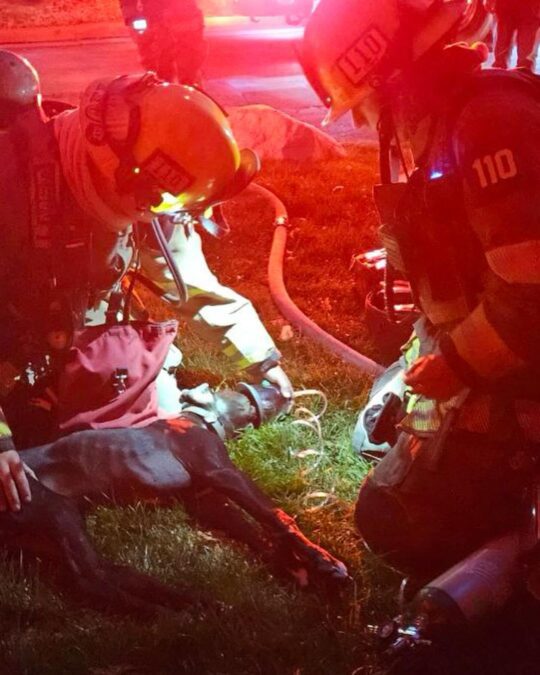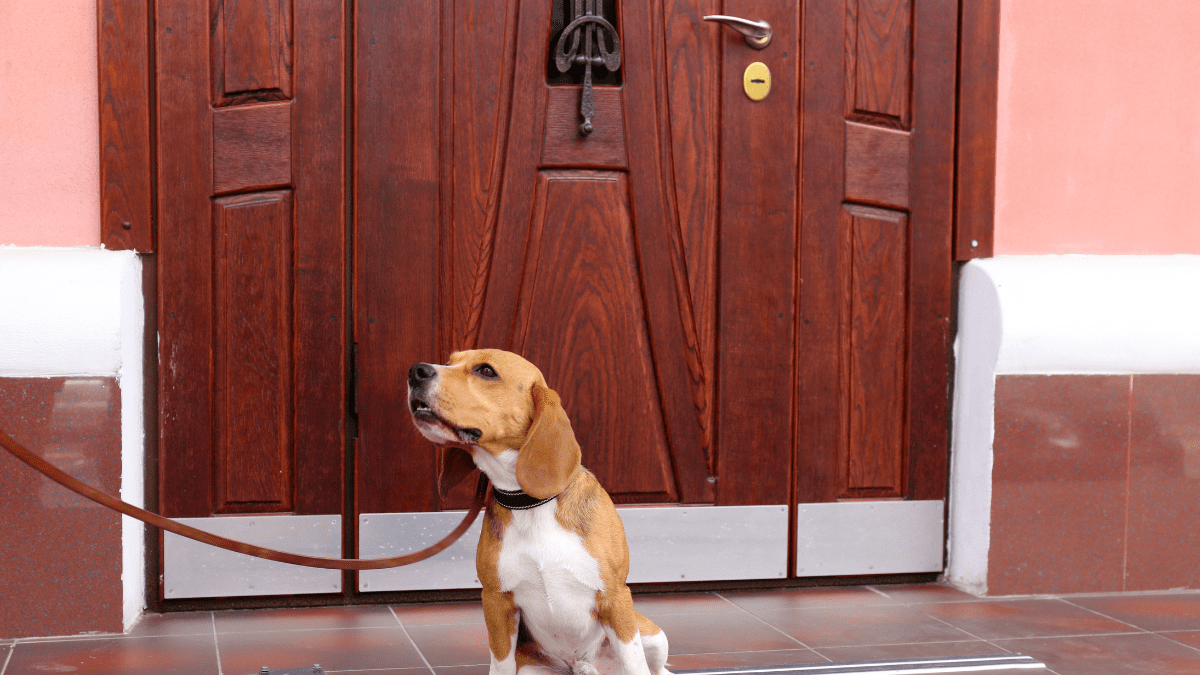Utah firefighters went above and beyond their duty when they saved a dog’s life after putting out the flames in an apartment building.
During unfortunate events like fire, the most important thing you can do as a pet owner is to protect your furry companions so they can evacuate with you. On September 16, 2024, around half past 5 a.m., there was no one to evacuate a dog inside a burning apartment in 7372 South Spring Crest Court in Midvale, Utah. Fortunately, firefighters from Unified Fire Authority (UFA) were there to rescue the dog from the fire.
The firefighters arrived at the apartment building and found flames coming out from one of the units. After putting out the fire, they saw an unresponsive dog in a kennel. The firefighters responded by taking the dog outside and performing a life-saving CPR (Cardio Pulmonary Resuscitation). Everyone felt relieved when the dog was brought back to life. Apparently, the pup was the only one left inside the home when the fire broke out.
In an Instagram post, the UFA shared they are grateful for having the opportunity to save not just the lives of humans but that of animals as well. It shows that our furry companions need to be protected too during disasters.
Officials expressed certainty that cooking fire was the cause of the incident. No other injuries were reported as the residents left the building to go to the store. However, affected residents were displaced and damages to the building reached up to $100,000.
When and How to Perform CPR on Dogs?
CPR saves lives as demonstrated by UFA firefighters when they rescued an unconscious dog. Still, it’s important to ensure it’s the right thing to do and that it’s executed properly. Remember that not every collapsed dog needs CPR. This technique is worth a try if the dog is healthy but suddenly you can’t find a heartbeat due to known causes like drowning or choking. If the dog has severe injuries, performing CPR might not be the kindest option that you can give.
Check for responsiveness, breathing, and heartbeat. If you can’t find any, start the CPR with fast chest compressions. Take note that there’s no one way to handle different breeds and dog sizes. For instance, hand positioning is different when you’re performing CPR on a flat-chested dog versus a deep-chested one. And so, it’s recommended that you learn the intricacies of CPR from a veterinary first aid course.
RELATED: 10 Critical First Aid Skills Every Dog Owner Must Know to Save Their Pet’s Life
How to Make Your Home Safer for Pets?
Emergencies like house fire can happen at any given moment, but with enough preparation you can ensure a quick and safe escape for you and your pup. Here’s how you can make your home safer and prepare for the unexpected:
- Follow fire safety precautions: Equip your home with a fire extinguisher so you can respond to a fire quickly. If you’re not always at home, having smoke and carbon monoxide detectors can alert your neighbors or the firefighters if ever a fire occurs. You can also designate a family member to gather your pet during a home fire. This ensures quick response even if you’re not present at home.
- Prevent your pup from starting fires: Avoid leaving dogs unattended near sources of fire: electrical cords, candles, and stovetops. Invest in flameless candles if you can, and secure young pups in a crate or behind baby gates.
- Make rescues easy for firefighters: In case of a fire, you can help firefighters save your pets by keeping them near entrances. Collars and leashes should also be accessible if ever they’re needed. Additionally, having the “Pet Inside” sticker in your home would make rescues much quicker and easier.
RELATED: 10 Emergencies Every Dog Owner Must Understand
From The Club
I admire the life-saving feats of UFA firefighters. The way they rescued the dog is a reminder that these responders don’t just look out for people and properties, but also for furry family members. What happened to the dog in the burning apartment also serves as a warning for pet owners. We cannot foresee when emergencies will happen, and so it pays to be prepared and to make sure that our pets are protected in every way possible.



